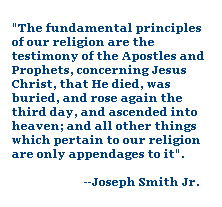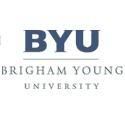Three Pillars: Beersheva, Shechem, Hebron, Jerusalem
Jewish tradition says there are three places in the Old Testament where the Patriarchs purchased land which serve as the basis for Jewish claim to the Land of Israel. First is Sarah's Tomb in Hebron or the Tomb of the Patriarchs. Second is Jacob's Well and the Tomb of Joseph in Shechem. Third is the Ornan's Threshing Floor where King David purchased land for the construction of the Holy Temple on Mount Moriah in Jerusalem. Mount Moriah is the location were Abraham bound and was commanded to offer his son Isaac.
Jewish tradition says that these 3 locations: Shechem, Jerusalem, and Hebron represent 3 principles upon which the universe exists namely Torah (restraint), the Divine Service (service to God), and Acts of Loving Kindness (service to man). Shechem which was the priestly city given to Joshua, was the place where the Israelites entered into a covenant with God at the bases of Mount Gerizim and Ebal. Hebron was the priestly city given to Caleb which represents acts of loving kindness or charity in that Abraham who is buried there was known as a friend to God. Ornan's Threahing Floor is the sight of the Ancient Holy Temple and was the place were the divine service was performed.
Interesting that all these 3 locations the previous owners are named numerous times and the exact amount of the purchase price is specified. Sarah's Tomb was purchases for four hundred shekels of silver from Ephron the Hittite. Ephron's name is given 8 times in the chapter associated with the transaction and 4 more times later for a total of 12. The Theshingfloor of Ornan was purchased for six hundred sheckles of gold. Ornan's name is given 11 times in 1 Chro 21 and a 12th time in 2 Chro 3. Jacob's Well was purchased for "100 pieces of money" from Hamor the Hivite, the father of Sheckem, in Gen 33. Hamor's name is given 11 times in Gen 33-34 and a 12th time in Joshua 24:32.
There is a forth location where the Patriarchs purchased land and that is at Beershebah where Abraham dug a well and purchased the land and water rights from Abimelech, King of Gerar and the Philistines, for 7 sheep (ewes) and oxen. Abimelech's name is also mentioned 17 times in the passage (Gen 20-21) and 7 more times in Gen 26. Abimelech name is given 24 times in total.
1. Hebron: Sarah's Tomb/ Tomb of the Patriarchs, Purchased by Abraham from Ephron the Hittite, the son of Zohar, for 400 pieces of silver. (Gen:23)
2. Shechem: Jacob's Well/Joseph's Tomb, purchased by Jacob from Hamor the Hivite, the Father of Shechem, for 100 pieces of money. (Gen:33)
3. Jerusalem: Ornan's Treshingfloor, purchased by King David from Ornam the Jebusite for 600 sheckles of gold. (1 Chron 21)
4. Beersheba: Abraham's Well, purchased by Abraham from Abimelech, King of Gerar and the Philistines, for 7 ewes and other sheep and oxen. (Gen:21)
Other. Bethel: Burial location of Deborah (Gen 35). Bethlehem: Tomb of Rachel (Gen 35)
Thinking about the 3 Pillars of Judaism. I don't think we can forget about Beersheva as a pillar. Beersheva is the place where Abraham first purchased land from the king of Gerar. The Land was desolate and undesirable but blossomed as a rose after Abraham had dug a well, irrigated, and planted a grove of trees. Abraham built an oasis out of the desert. Here in Beersheva was the birthplace of Isaac and the beginning of the Family of Abraham. If I had to assign a principle to Beersheva, I think Beersheva represents the principle of work and the role of fatherhood and family.
The German Haifa Cemetary is the burial location of a couple of LDS Missionaries and German immigrant converts who died and were buried in Israel prior to Israel becoming a state. While these grave do show an LDS presence in Israel prior to 1948, they were NOT used as a basis for the LDS Church purchasing of land in Israel for the BYU Jerusalem Center or to receive official state recognition.
http://rsc.byu.edu/missionarys-story/haifa-byu-jerusalem-center














No comments:
Post a Comment